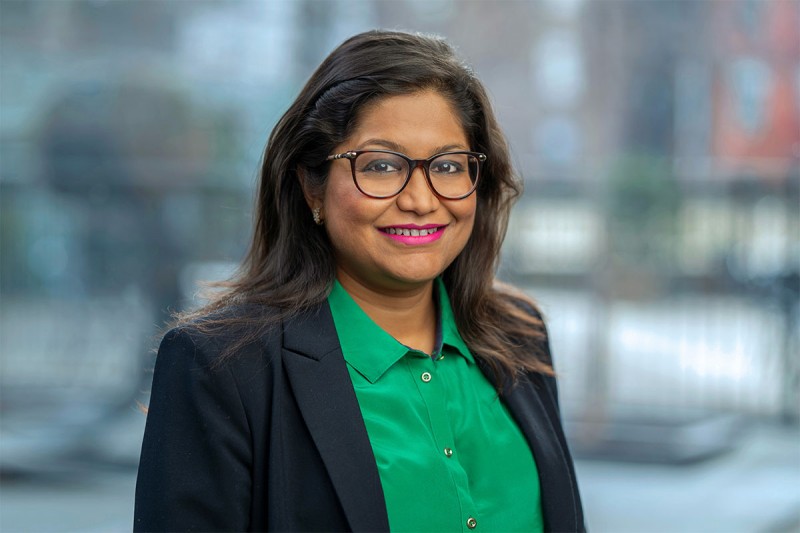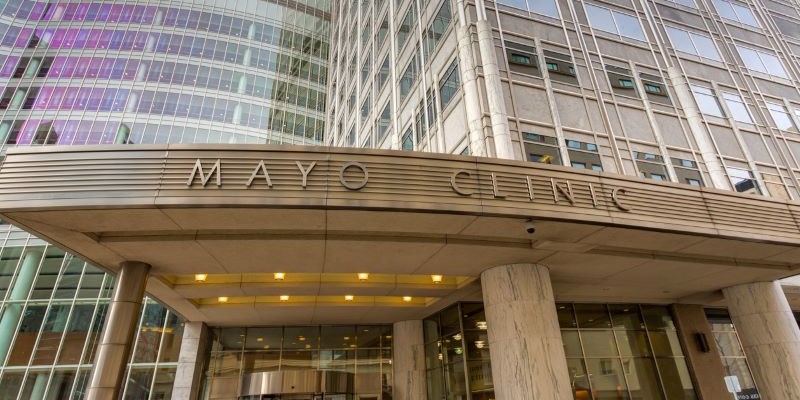
Fitness—not just age—is the key consideration in treating older adult patients with newly diagnosed diffuse large B-cell lymphoma (DLBCL). A significant portion of this population is classified as frail, making optimal treatment a “persistent challenge,” according to Pallawi Torka, MD, assistant attending physician at Memorial Sloan Kettering Cancer Center.
During a mini-symposium on DLBCL at the 2025 International Ultmann Chicago Lymphoma Symposium (IUCLS), Dr. Torka explored the nuances of assessing fitness, outlined practical tools such as the Simplified Geriatric Assessment and the Timed Up and Go test, and emphasized the need to distinguish between curative and palliative approaches early in care planning.
She also reviewed the role of attenuated chemotherapy, emerging trial options for both fit and unfit patients, and how real-world application of fitness assessments can guide treatment selection.
In an interview with Blood Cancers Today, Dr. Torka expanded on her IUCLS presentation and discussed current guidelines and evidence-based strategies for managing DLBCL in older adults.
BCT: What did you discuss during IUCLS, and how does it fit into the overall conversation around newly diagnosed DLBCL management?
Torka: I was part of the mini-symposium on diffuse large B-cell lymphoma, and my talk was on the challenges that we face in treating unfit, frail, older adults. So, a lot was unpacked in that talk. The highlights were, number 1, not all older adults are the same. We should really be talking about functional age, or functionomics, rather than chronological age. There are many ways of figuring out functional age. Some of the simple measures are the Simplified Geriatric Assessment and the Vulnerable Elders Survey-13, which is also a patient-administered questionnaire. The simplest, though, is the Timed Up and Go test, which takes about 15 seconds to do and can really identify what kind of risk a patient is at for toxicities.
I also touched upon different kinds of treatments, both current treatments and upcoming treatments, and I shared an algorithm about how to think about these patients and talked in brief about relapsed/refractory DLBCL and how CAR T-cell therapy is still the best option for our older patients.
For those who are CAR T ineligible or those whose disease comes back after CAR T-cell therapy, outcomes are poor, regardless of age, but that’s where there are many ongoing clinical trials, which are evaluating novel combinations. I think they’re going to move the needle forward in a few years.
What do guidelines say about treating this patient population, and how does that guide you in treatment optimization?
So, I think the first question is, what do you call an older adult? In general, if you look at the guidelines, anybody who’s above the age of 65 qualifies as older, in terms of lymphoma. I think anybody who’s above 70 should have some sort of functional assessment, which could be very simple. It could just be the Timed Up and Go test, as I said, or the Simplified Geriatric Assessment. The most important thing is that we have to decide up front whether a patient is fit for curative treatment or palliative treatment. What do I mean by that? If a patient is eligible for any amount of anthracycline, for example, if they can even get R-mini-CHOP [rituximab, cyclophosphamide, doxorubicin, vincristine, and prednisolone], they can potentially receive curative treatment. So, that’s the first decision that we have to make. And then, based on that, we decide if a patient is completely fit.
Regardless of age, they should get either our R-CHOP or POLA-R-CHP [polatuzumab, rituximab, cyclophosphamide, doxorubicin, and prednisone] —whatever the preference is. Patients above 80 years of age are automatically classified as unfit based on the Simplified Geriatric Assessment, and there’s plenty of data, which show that R-mini-CHOP and POLA R-mini-CHP have similar outcomes compared to full doses of these treatments. So, I generally prefer attenuated chemotherapy in these patients because we need a balance of efficacy but also toxicity, and this seems to fit the bill.
All these patients should be considered for enrollment in clinical trials because we want to take the onus away from chemotherapy and try many of these novel treatments that are coming up to achieve cures, so that it’s less toxic for our patients.
With ongoing clinical trials in mind, how do you see treatment of older adult patients with DLBCL evolving over time?
The way I think about clinical trials in our older patients is that you have to really decide fitness. As I mentioned, for somebody who’s fit, they should go on similar trials that are earmarked for our younger patients. So, for example, one of the large ongoing trials is the SKYGLO study, which is looking at the combination of glofitamab with polatuzumab and R-CHOP. Then we have the study, which is looking at epcoritamab with R-CHOP. Our fit patients are best served by these trials. For unfit patients who are still candidates for chemotherapy—but maybe they are at higher risk of toxicities from full-dose chemotherapy—I think they are the best clinical trials for our patients who are unfit. We want to use trials where they do have a backbone of mini R-CHOP or POLA R-mini-CHP. Why? Because we know that these patients do derive benefit from chemotherapy.
In that setting, we have a couple of large trials that are ongoing. For example, the POLABEAR study, which is R-mini-CHOP versus POLA R-mini-CHP. We have the large intergroup North American S1918 study, which is evaluating R-mini-CHOP with or without oral azacitidine. Lastly, we have the ARCH study, which is looking at R-mini-CHOP with or without acalabrutinib. So, these are the large trials, and we do have some smaller trials, which seem very interesting. For example, at Memorial Sloan Kettering Cancer Center, we have the GLORY study, which is a PET-adapted treatment utilizing glofitamab and polatuzumab with the R-mini-CHOP backbone. Also, there are data from China, looking at zanubrutinib, rituximab, lenalidomide, and mini-CHOP, which had some excellent results presented at the ASH [American Society of Hematology] meeting last year. Lastly, for our patients who are truly chemo ineligible, a slew of frontline trials are looking at nonchemotherapy-based approaches. There have been several in the past, and several are currently ongoing.
One trial worth mentioning is the LOTUS-9 study, which was evaluating loncastuximab tesirine with rituximab, seemed like a good concept, but the population it was designed for was truly very frail patients above the age of 80. So, while the regimen had good response rates, there was increased toxicity due to COVID-19 and pneumonia. So, this regimen fell to the wayside in the wake of this trial. Now we do have trials evaluating bispecific antibodies as monotherapies. For example, the EPCORE DLBCL-3 study has epcoritamab monotherapy for 1 year. And of course, we have a lot of combinations, with very preliminary data.
How do real-world data factor into optimal treatment for older adult patients with DLBCL?
It’s very true that we need to do these fitness assessments in the real world because most of the patients who go on clinical trials historically are really fit, so they don’t represent the majority of patients who are coming into our clinic. So, as I mentioned, the gold standard is a kind of comprehensive geriatric assessment, but that requires a full geriatric clinic, a social worker, a physical therapist, a pharmacist, a lot of resources. Not all of us are blessed to have an inbuilt geriatric clinic as part of our cancer center. So, what can a busy lymphoma physician do? The most validated fitness assessment is the Simplified Geriatric Assessment, which was developed by the Italian Lymphoma Group.






 © 2025 Mashup Media, LLC, a Formedics Property. All Rights Reserved.
© 2025 Mashup Media, LLC, a Formedics Property. All Rights Reserved.